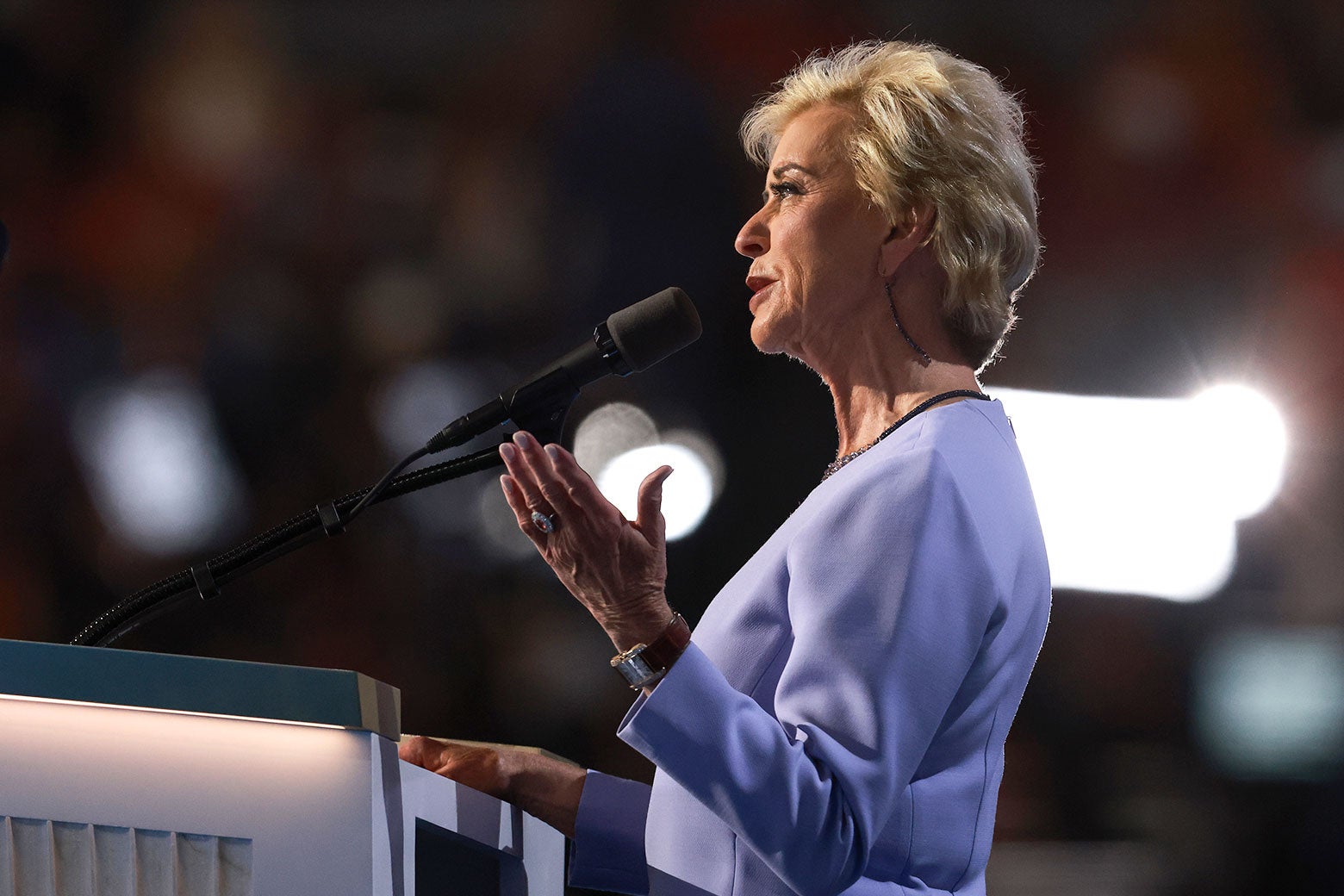Entertainment
Trump’s WWE Advisor Has a Controversial Vision for American Schools

Donald Trump has announced Linda McMahon as his nominee for Secretary of Education, a move that might signal a return to controversial educational policies harkening back to the era of the Founding Fathers. Supporters of Trump envision a revival of public schooling that aligns with historical ideals, but the reality could be quite different and detrimental, even for those who back the former president.
Much like during his first term, the Trump administration is poised to revisit old ideas on education. McMahon, who led the Small Business Administration in Trump’s previous term, is known for her emphasis on blending education with workforce readiness. Her organization, the America First Policy Institute, champions “workforce innovation” that aims to steer funding away from traditional public schools to private institutions and vocational training.
As a historian of American public education, I can’t help but highlight the irony here. While supporters may yearn for a nostalgic educational landscape, the actual conditions of early American schooling tell a different story. In the years following the Revolution and up until the Civil War, education was often inconsistent and chaotic. Public schools were inadequate, and many children—especially enslaved Black children—were legally denied access to education.
Statistics from that period reveal a stark reality. The Rev. Peter Williams noted that in 1828, New York City had only 600 Black children enrolled in public schools, despite hundreds more needing access. Similarly, Horace Mann discovered in 1839 that a significant number of children remained without proper educational opportunities in Massachusetts. The situation was just as grim in the rural South, where the number of children without access to schools overwhelmed the available public education options.
The historical context illustrates that schooling was not just lacking; it often put children to work first and taught them second. Many children were expected to contribute to the family income from a young age. By the turn of the 19th century, approximately three-quarters of boys aged 10 to 15 were employed, while the situation for girls, often involved in unpaid domestic labor, was likely even more severe. The abuses that accompanied child labor were rampant, and reformers fought hard for better educational options for working children, though success was limited.
The notion of apprenticeships—initially a pathway for some to skilled careers—also has a complex legacy. For affluent families, apprenticeships could lead to rewarding futures. Yet for many less fortunate children, these arrangements were more about servitude than vocational training. Children from poorer backgrounds often found themselves in exploitative roles with little educational return.
Despite the historical awareness we have gained since that time, there’s a troubling risk with a McMahon-led Department of Education. The very fabric of child labor protections is at stake, as vulnerable children may find themselves in precarious job situations again. Business interests may prevail over genuine educational development, leaving America’s youth vulnerable to exploitation rather than empowerment.
There’s a glaring warning evidenced by recent moves in states like Texas, where voucher programs threaten to destabilize public education systems. The resistance within the Republican Party to such privatization initiatives underscores a growing realization of the dangers they pose, particularly in rural areas where public school funding could dwindle, leading to severe educational disparities.
Ultimately, the lessons learned over generations are clear: public education fueled by public funding is essential for equitable access to learning. Offering families “choice” in education means little if private options remain unaffordable or inaccessible. Furthermore, relying on companies to serve as educators often results in some children benefitting at the expense of others, creating wide gaps in equality.
If confirmed, McMahon could overlook these vital lessons, with potentially costly ramifications for the future of American education. The stakes couldn’t be higher, as the direction taken now will impact countless lives and the very nature of education in this country.
